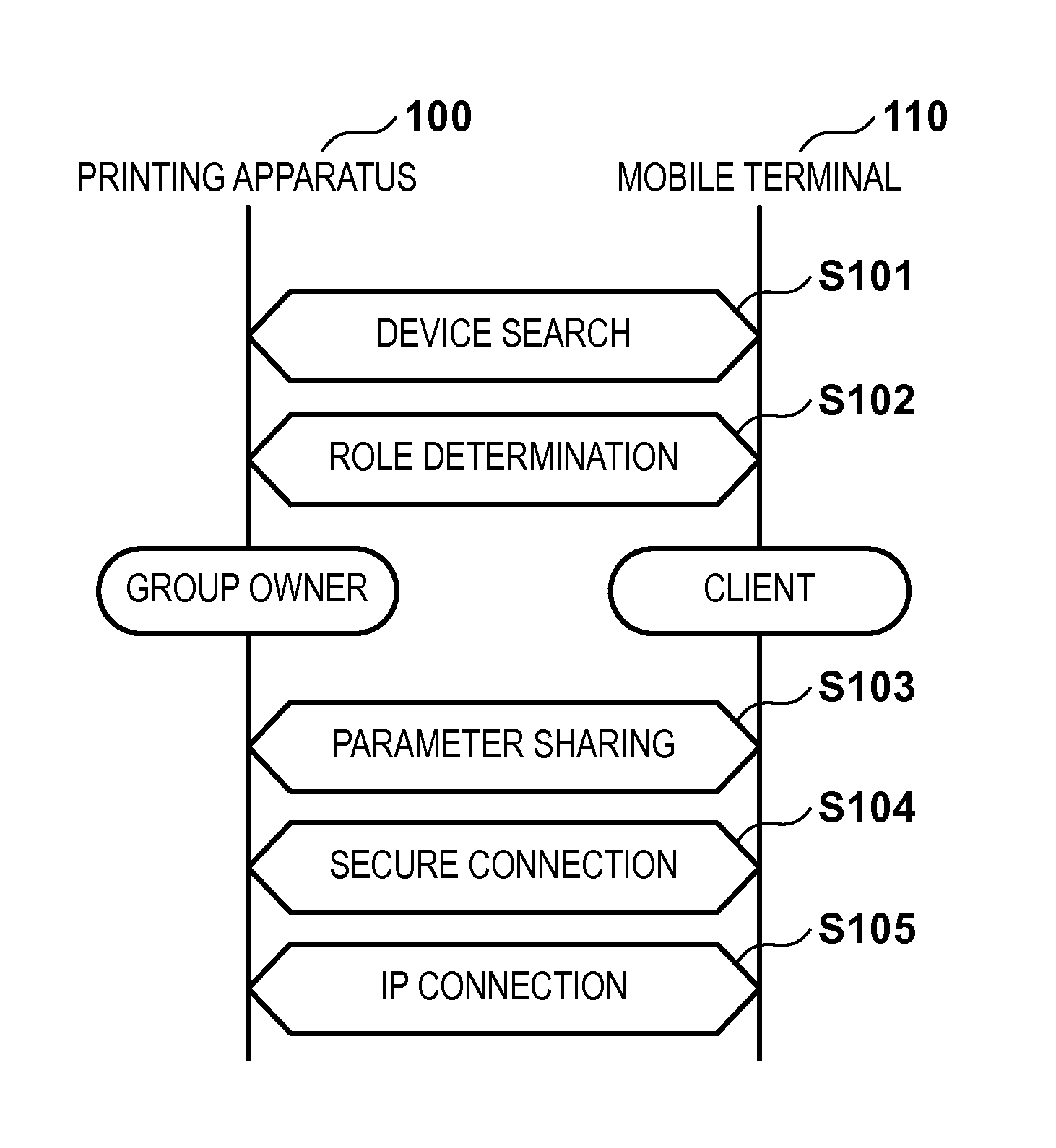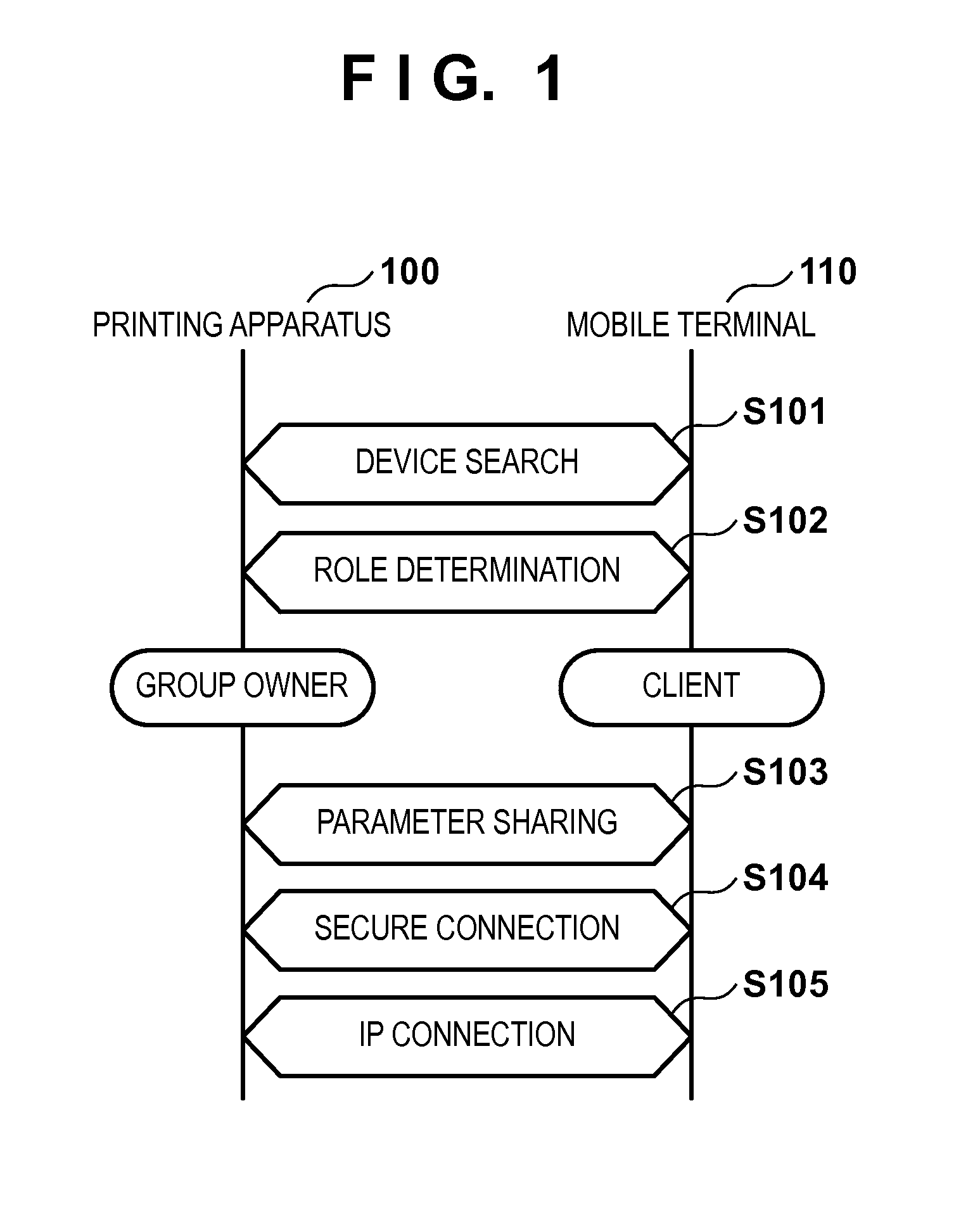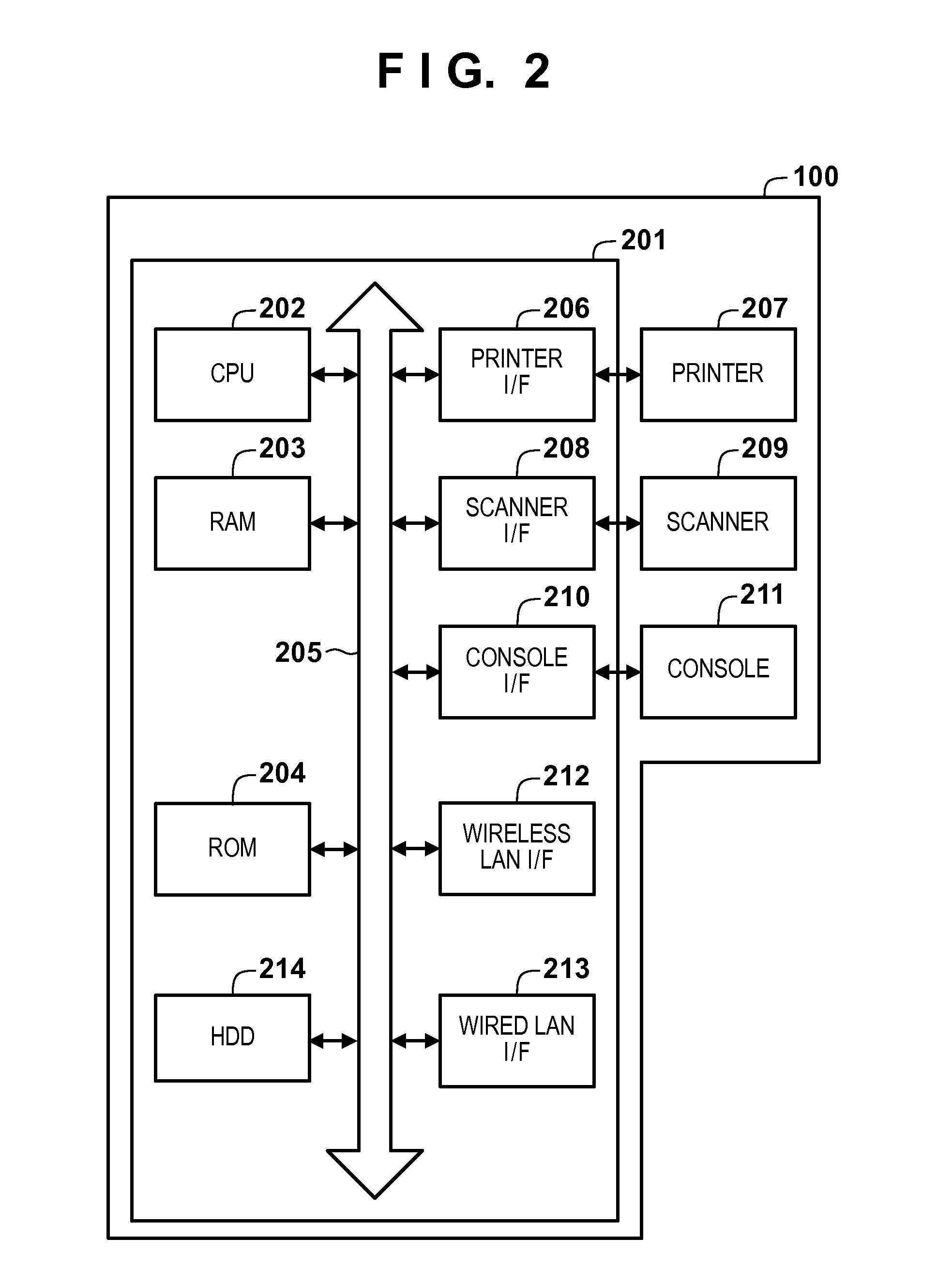Communication apparatus, control method thereof, printing apparatus, and storage medium
- Summary
- Abstract
- Description
- Claims
- Application Information
AI Technical Summary
Benefits of technology
Problems solved by technology
Method used
Image
Examples
first embodiment
[0070]A first embodiment describes a case where the operation state of the printing apparatus 100 shifts from the normal power state (a non-power saving state) to a power saving state (for example, a sleep state) in which the printing apparatus 100 consumes a lower amount of power than in the normal power state. In the present embodiment, the normal power state (a first state) is the non-power saving state, and corresponds to a normal operation state in which power is supplied to a plurality of devices provided in the printing apparatus 100. On the other hand, the power saving state (a second state) corresponds to a state in which the power consumed by the printing apparatus 100 is reduced by supplying power only to some of the stated plurality of devices.
[0071]Hereinafter, a process for switching the communication mode according to the present embodiment, executed by the printing apparatus 100, will be described with reference to the flowchart shown in FIG. 5. Note that the printin...
second embodiment
[0087]If, for example, a power switch (not shown) is switched off while the printing apparatus 100 is operating in a state where the communication mode is set to the second wireless communication mode (Wi-Fi Direct), the printing apparatus 100 shifts from an activated state to a shut down state. In this case, if the power switch of the printing apparatus 100 is then turned on, the printing apparatus 100 will be activated in a state in which the communication mode is the second wireless communication mode (Wi-Fi Direct). In other words, a situation can arise in which a user who has connected to and is using the printing apparatus 100 in the first wireless communication mode is rendered unable to use the printing apparatus 100 until the communication mode of the printing apparatus 100 is returned to the first wireless communication mode from the second wireless communication mode.
[0088]Accordingly, a second embodiment describes an example in which the communication mode is automatical...
third embodiment
[0099]As described above, the printing apparatus 100 includes an authentication function for permitting the printing apparatus 100 to be operated by a user whose login authentication has succeeded. Normally, only users whose login authentications have succeeded can operate the console 211 of the printing apparatus 100 and, by extension, the printing apparatus 100 itself. When the user completes a desired task using the console 211 and a logout process is performed for that user, that user is once again rendered unable to operate the console 211. Such login authentication is carried out by, for example, providing a card reader in the printing apparatus 100 and using card-based authentication, accepting the input of a username and a password, or the like.
[0100]In the case where the printing apparatus 100 includes such an authentication function, the user can log into the printing apparatus 100, switch the communication mode of the printing apparatus from the first wireless communicati...
PUM
 Login to View More
Login to View More Abstract
Description
Claims
Application Information
 Login to View More
Login to View More - R&D
- Intellectual Property
- Life Sciences
- Materials
- Tech Scout
- Unparalleled Data Quality
- Higher Quality Content
- 60% Fewer Hallucinations
Browse by: Latest US Patents, China's latest patents, Technical Efficacy Thesaurus, Application Domain, Technology Topic, Popular Technical Reports.
© 2025 PatSnap. All rights reserved.Legal|Privacy policy|Modern Slavery Act Transparency Statement|Sitemap|About US| Contact US: help@patsnap.com



